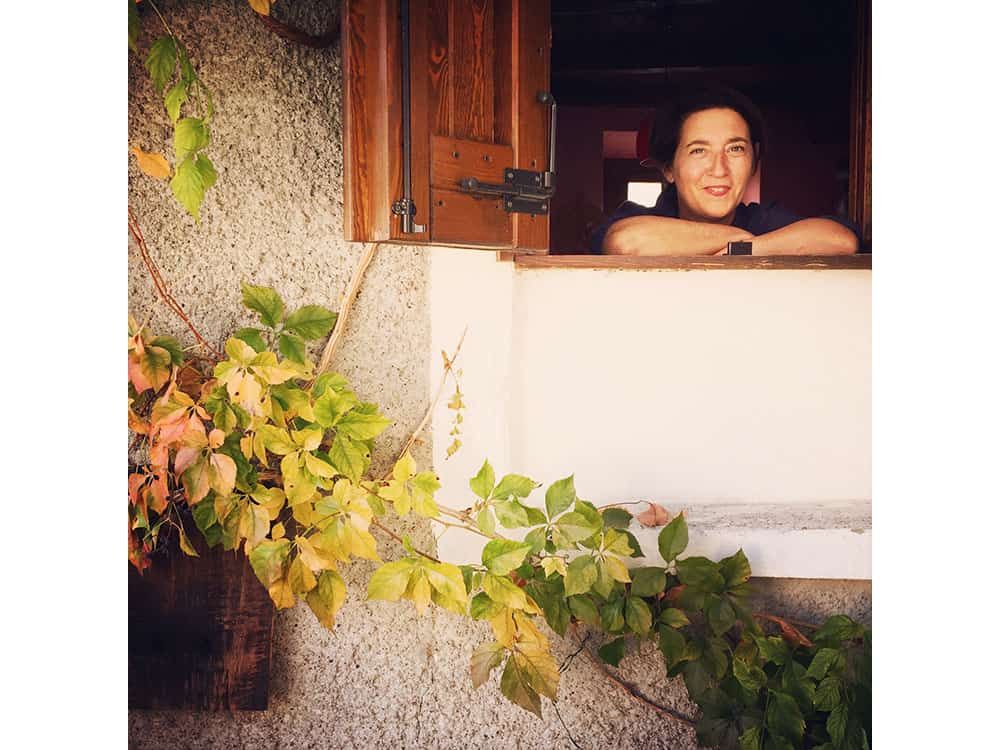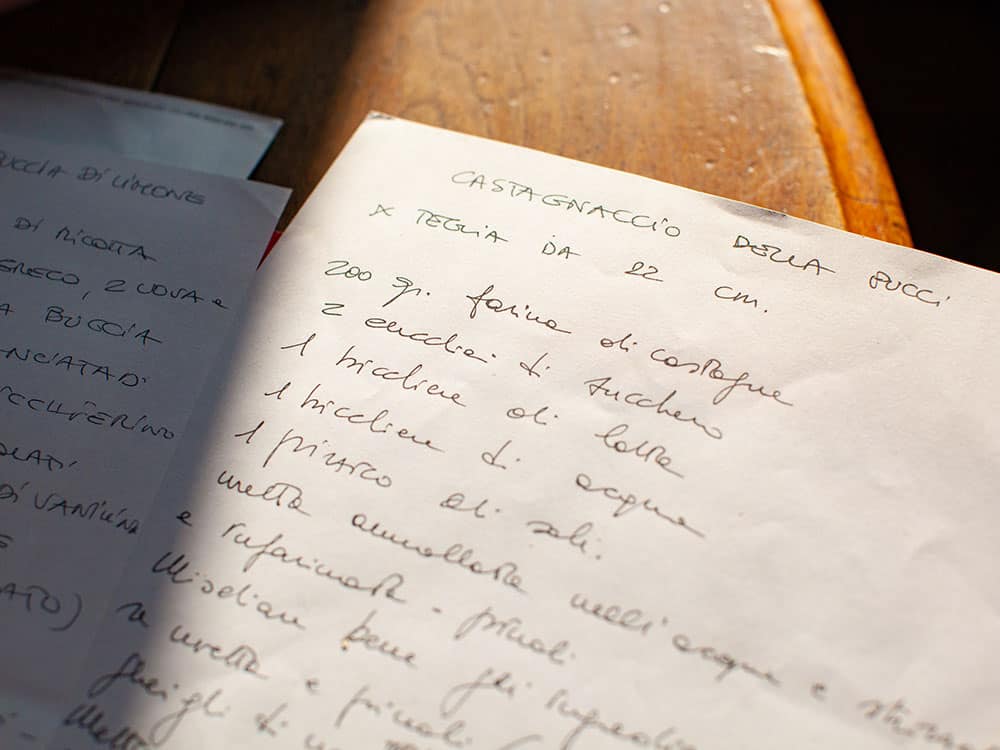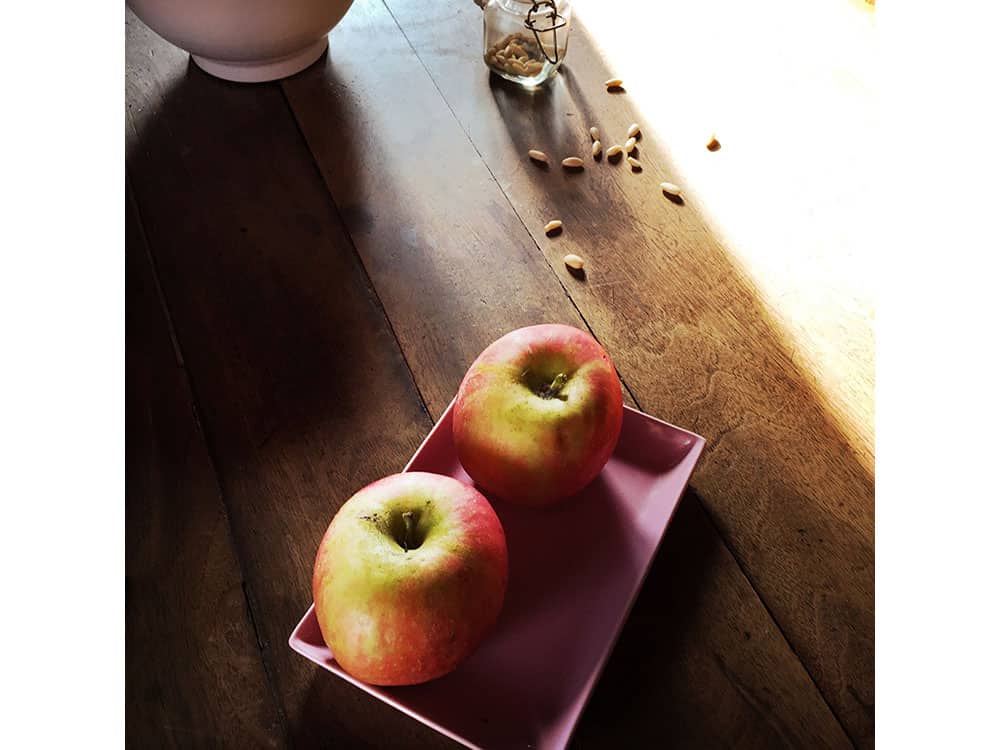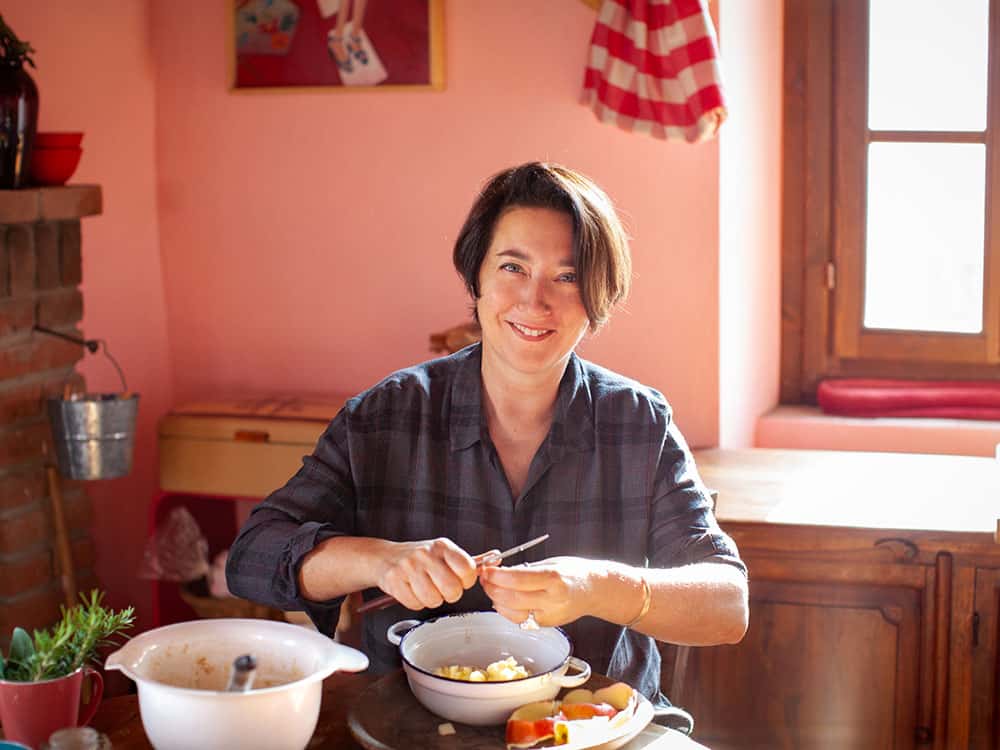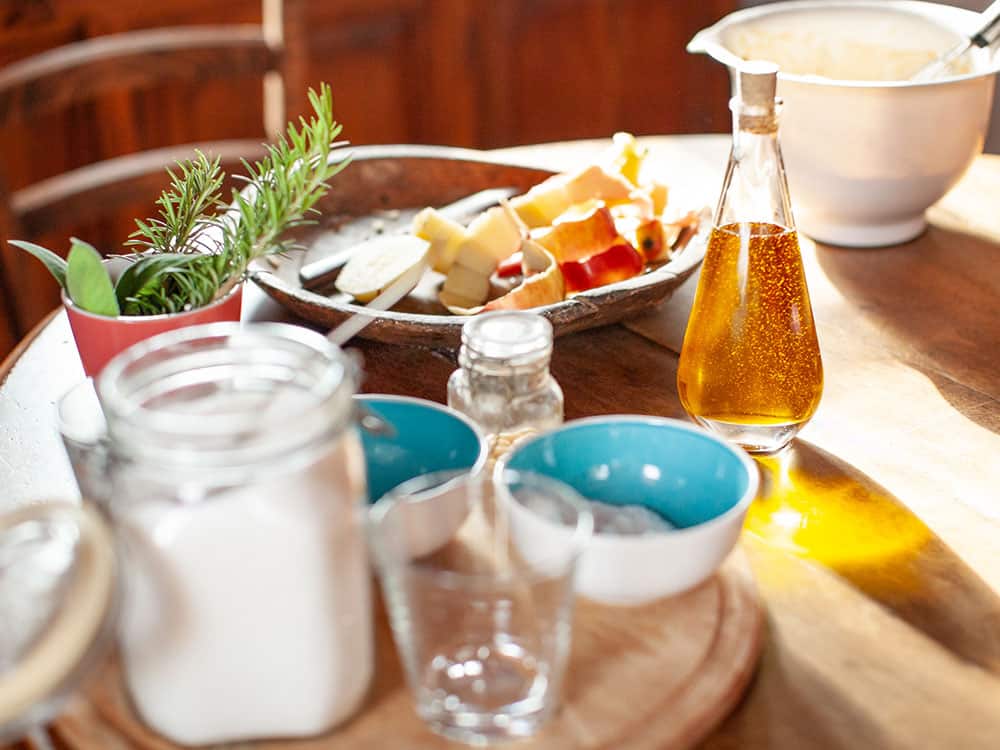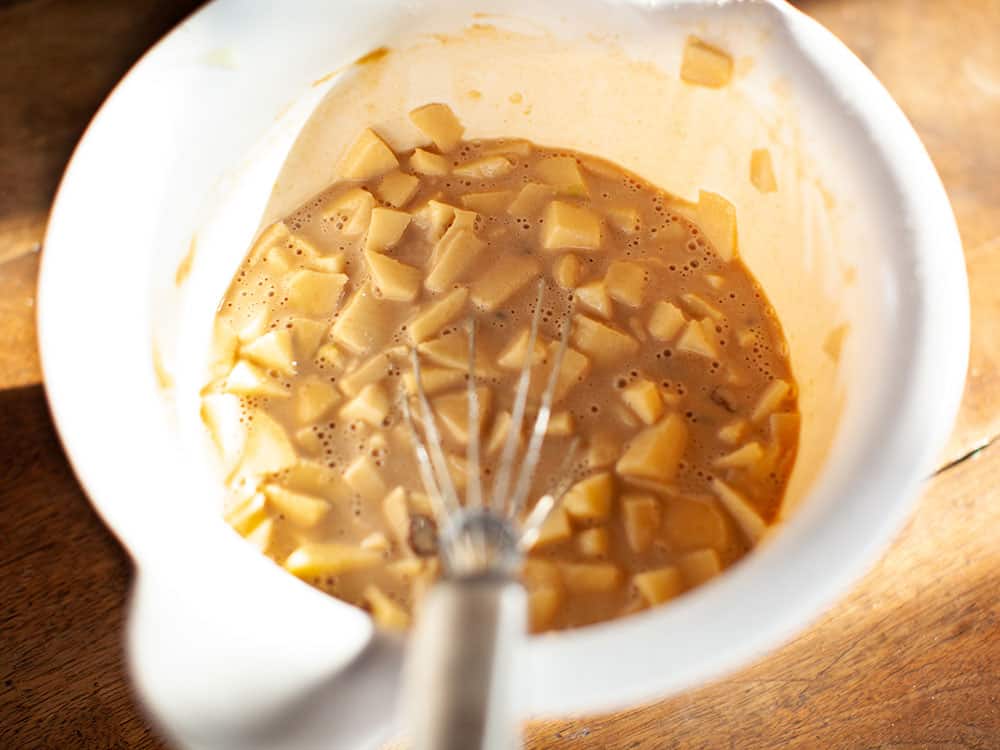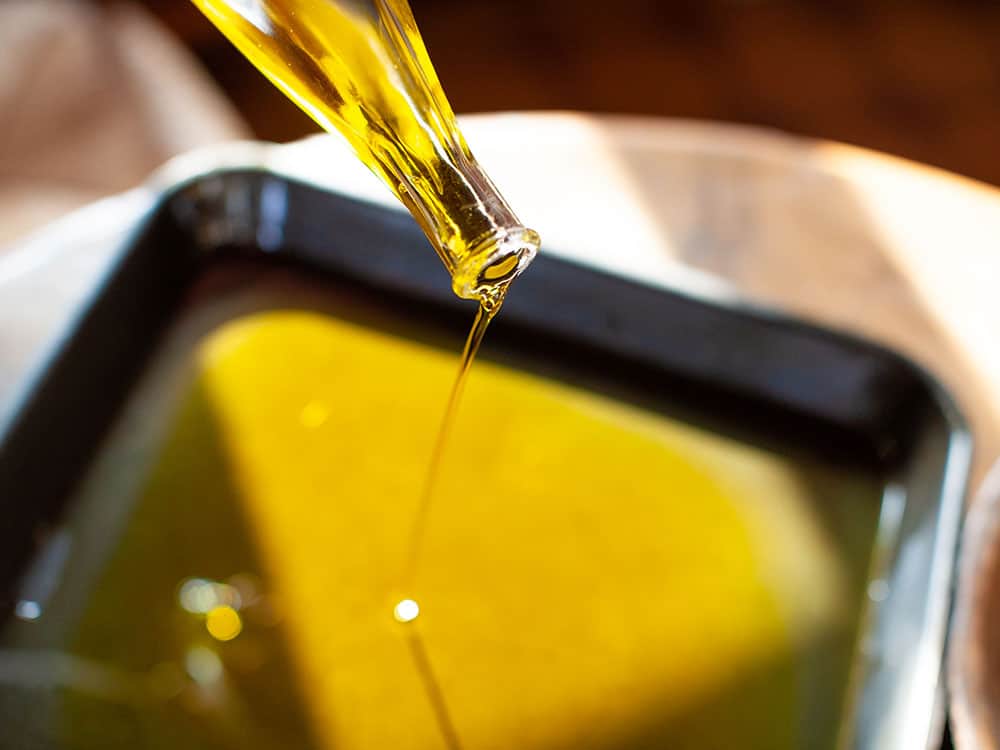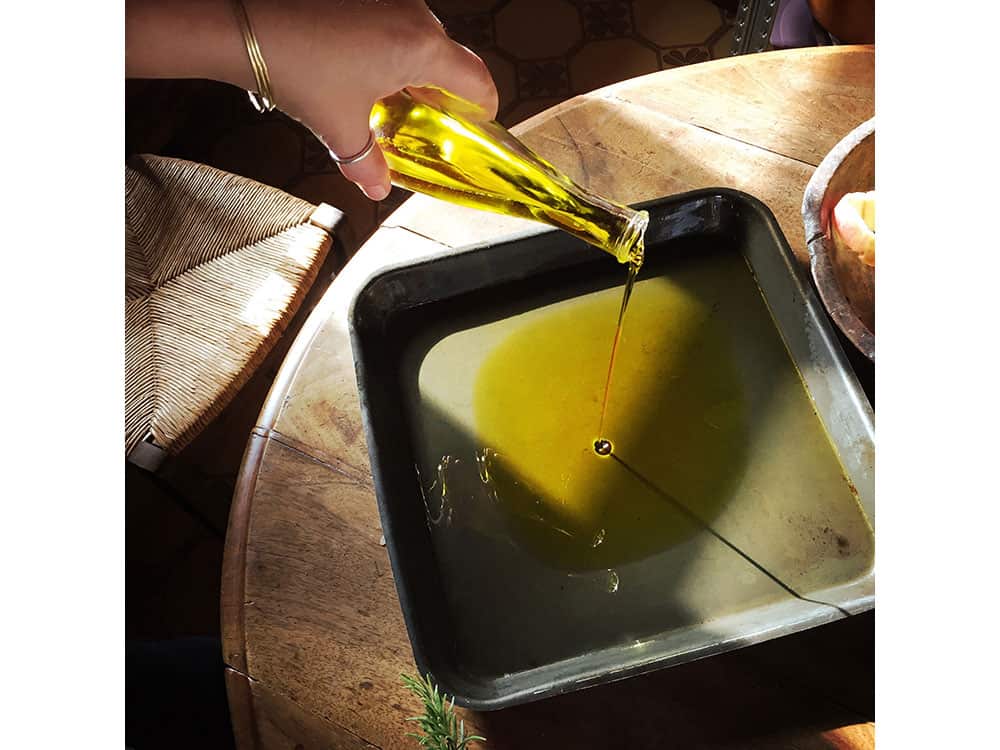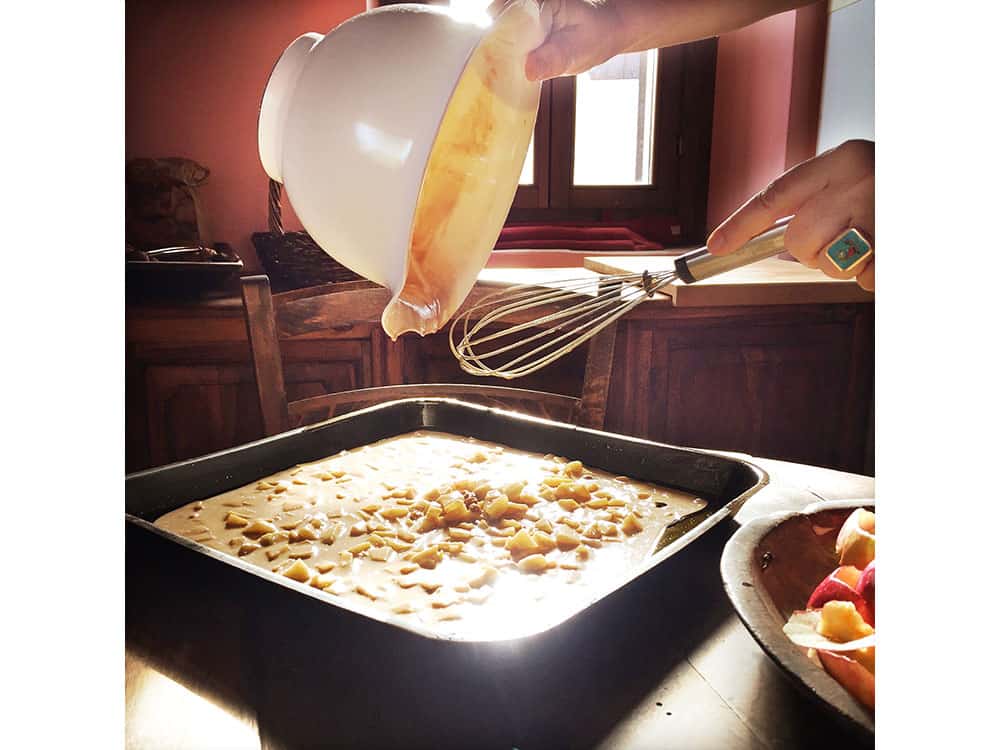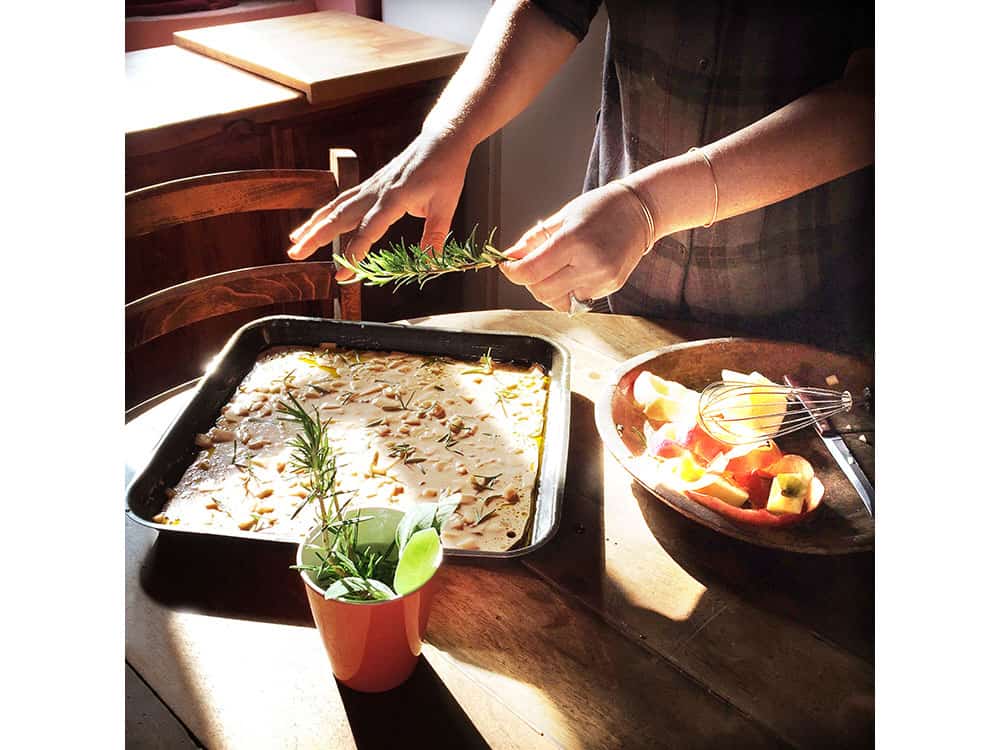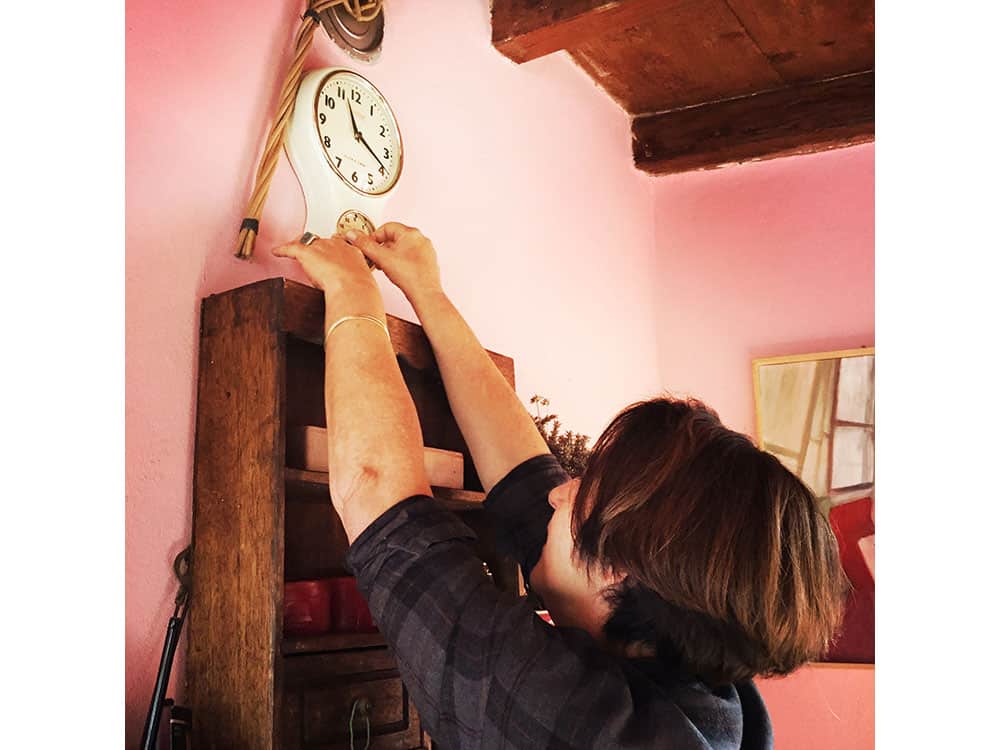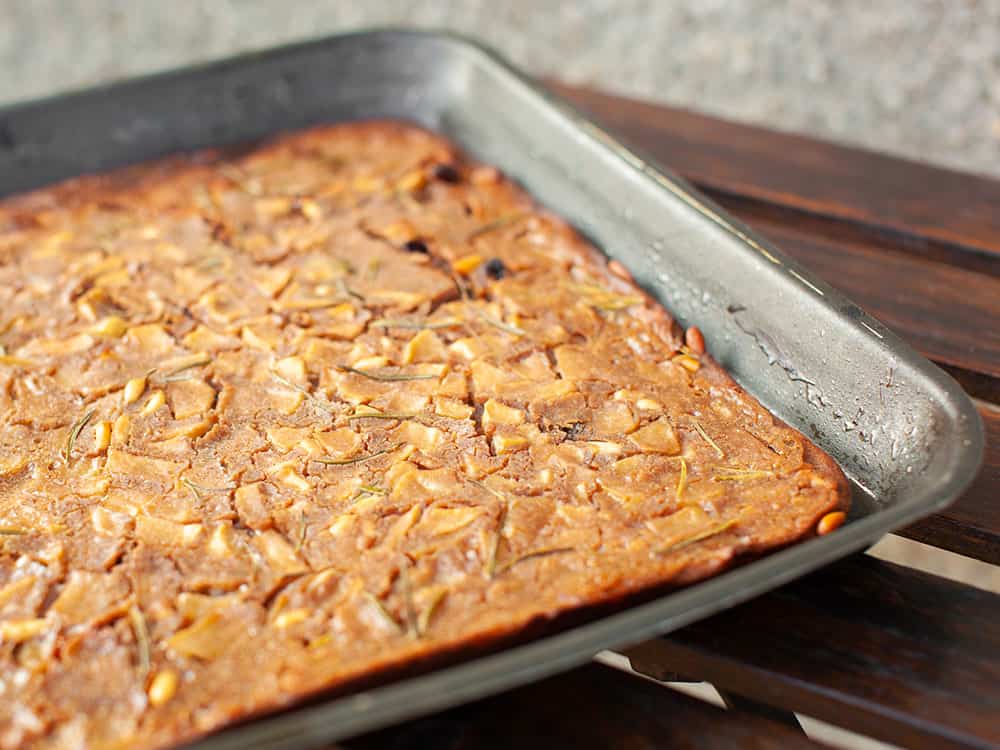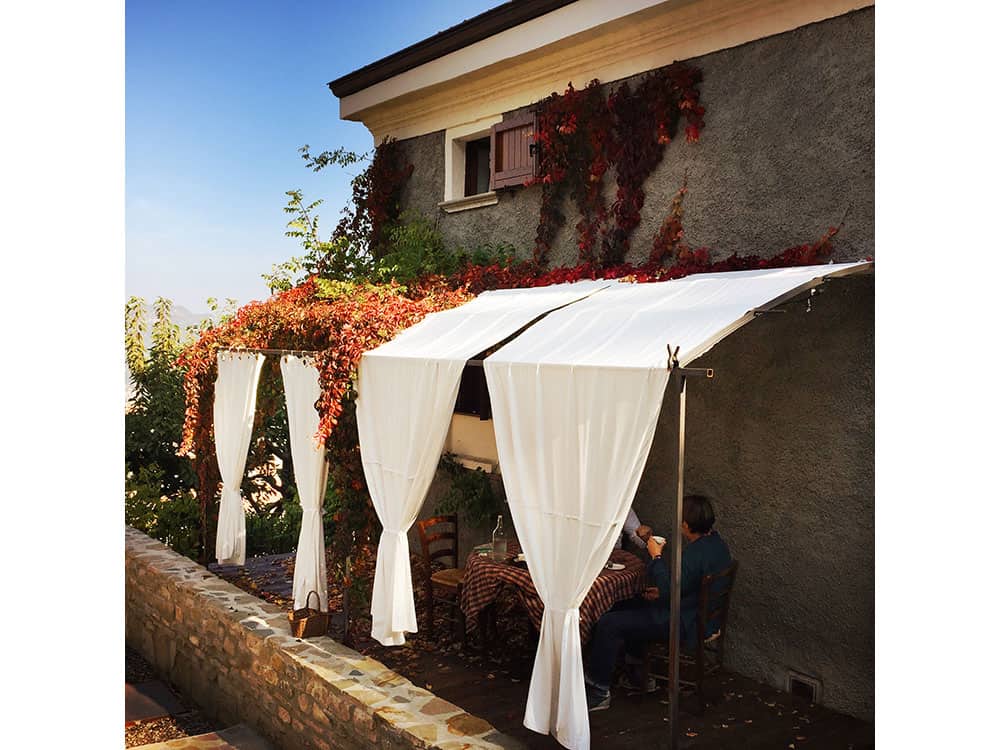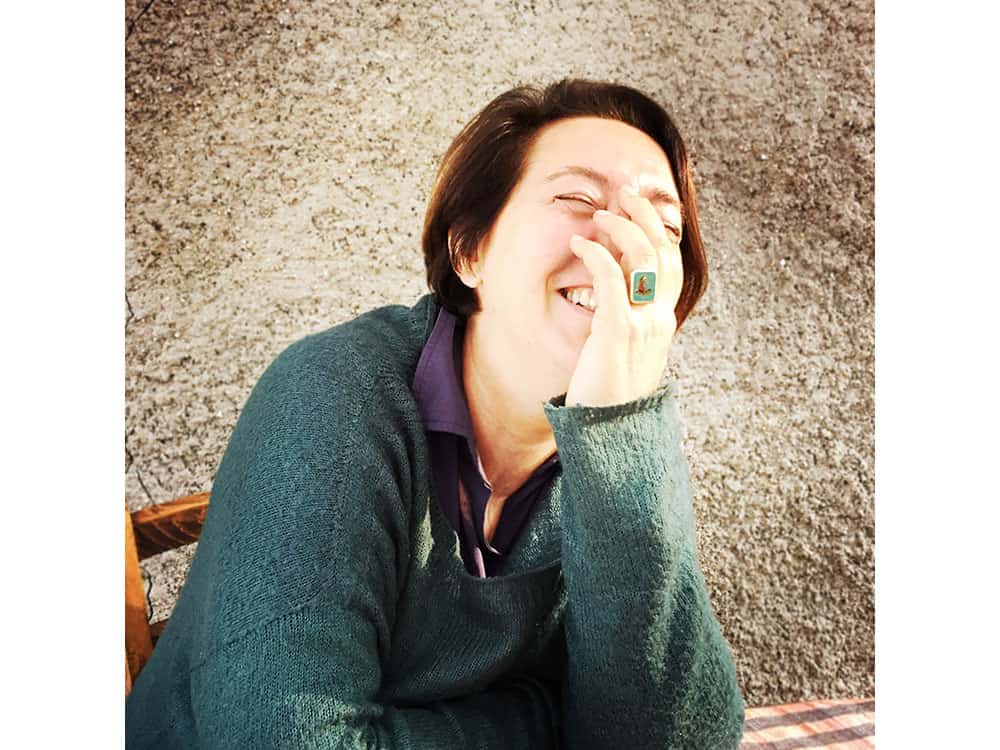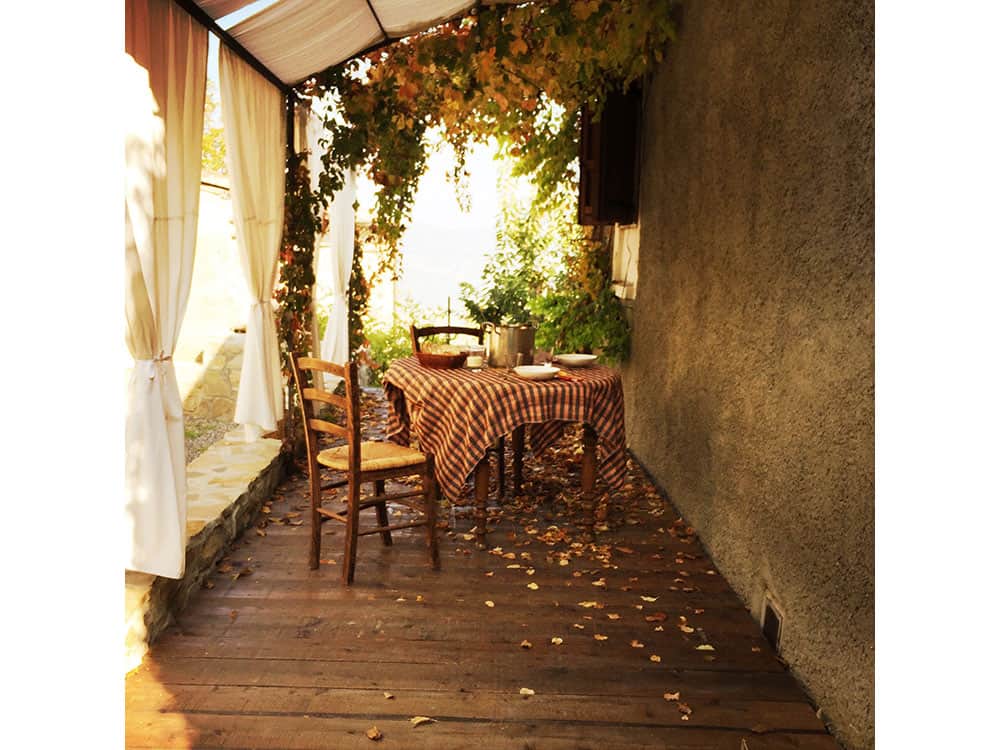Today I want to talk about an Italian ancient dessert, so ancient that nowadays, accustomed as we all are, to refined sweets, perhaps it doesn’t even seem a desert to our spoiled palates.
In order to make it a little more contemporary, I present it for you in my mother’s version, with the addition of small apples slices.
The basis of castagnaccio is chestnut flour and being the chestnut tree widespread and spontaneous in many regions of central and northern Italy (Piedmont, Liguria, Lombardy, Veneto, Emilia Romagna, and Tuscany), this dessert does not boast a homeland nor a definitive and exclusive recipe but it was probably widespread from Tuscany to other areas of the country. It was in the 1800s that the dish became tastier, with the addition of new ingredients such as raisins, pine nuts, rosemary, and sugar.
The chestnut is a very ancient fruit, present in the human diet since prehistoric times.The chestnut tree is by far the most long-lived European trees: the oldest specimen in Italy is called Castagno dei Cento Cavalli, and is located in Sicily, on the eastern side of the Etna Volcano.
Some botanists claim it’s between 3-4,000 years old, which would probably make it the oldest living thing in Europe.
Before the discovery of America, when in Europe there were still no potatoes or corn, the chestnut was, in fact, the food that more than any other preserved from hunger and allowed to overcome periods of famine.
In fact the chestnut flour was used to prepare a kind of polenta that preceded for centuries, or perhaps thousands of years, the relatively modern version that we cook with corn flour today, anticipating some of its proverbial characteristics: an economical but tasty food staple, usable in many ways, recyclable with some simple trick so as to permit its use for more than one time, and above all suitable to satisfy, even in small quantities, and quench the hunger of the population.
It is a digestible food, of high nutritional and caloric value, healthy because its cultivation does not require the use of any chemical substance or pesticides. The chestnuts contain a wide range of dietetic and nutritious substances that are assimilated by the human body very quickly. The high content of mineral salts, such as phosphorus, magnesium, potassium, helped towards the proper functioning of the cardiovascular and neuromuscular systems, increasing the working capacity and resistance to fatigue. Imagine how precious it could be in a time were food was far from being available in the way it is today!
The castagnaccio for me it is also a strong childhood memory because my grandmother Lidia often prepared it; she was born and raised in Liguria and used to cook with simple and very basic ingredients.
When I was saw that brown sweet coming out of the oven in its sizzling pan, I was convinced it was some sort of hot, hard chocolate (chestnut flour when mixed with liquids becomes almost fully brown) but when it had cooled enough and my Grandma proudly gave me a slice, I was unfailingly disappointed wondering why grownups found such an unsatisfactory taste worth the effort.
Now is a different story: I know the difference between colors and tastes and I regret not to have accepted her gifts with the enthusiasm she deserved.
I want to propose this recipe even if I guess you can deeply appreciate it only if you have experienced as I mentioned before basic and simple and food, such natural ingredients are meant to be enjoyed in the setting where they belong to.
Food, I’m convinced, is an emotional experience and it can’t really be satisfying when detached from its context.
Anyway as I mentioned before, the one you’ll find below is more of a sweet-after-a-meal-version but you can cook the original version (with no apples but with the addition of the rosemary leaves) and serve it with tasty cheese and honey, like my sister Patti does, which I find to be a very interesting combination.
I had great fun making the recipe in our country house with my friend Tosca who took lovely pictures and great portraits so at the cost of seeming self-centered, I decided to add the lot of them in here, what the hell!
CASTAGNACCIO RECIPE
2 hundred grams sifted chestnut flour
2 tablespoons of sugar
1 glass of milk
1 glass of water (more or less)
1 pinch of salt
2 renette apples (or other plain apples) cut into small and thin pieces
1 handful of raisins
1 handful of pine nuts
2 pinchs of fennel seeds
½ glass of extra virgin olive oil
Prepare the batter in a bowl making sure that no lumps are formed.
Pour the oil into a wide and low pan (about 25 cm in diameter), pour all the mixture into the pan, sprinkle with some fennel seeds.
Olive oil will tend to rise at the edges: without adding more, pick it up with a spoon and evenly pour it on the mixture.
Bake in a preheated oven at 180 degrees for 25/30 minutes.
Serve warm or cold
Don’t forget: the legend says that the rosemary leaves in the castagnaccio work like a love potion, and the young man who eats the dessert received from the hands of a girl falls madly in love with her.
If this is true forget about the apples and just stick to the traditional recipe!
Also check out our article regarding Italian Chestnuts here
Betti
[socialWarfare]

